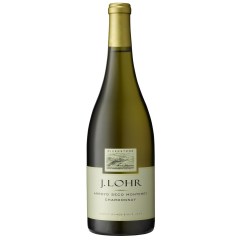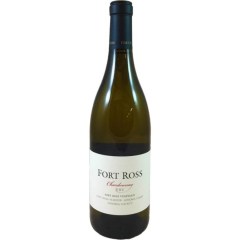BestReviews is reader-supported and may earn an affiliate commission. Details

Bright, medium-bodied chardonnay from the winery that made Napa Valley famous.
Balanced flavor profile offers plenty of lush stone fruit and with baked butter and oak. Pleasant weight on the tongue with good mouthfeel. Ideal with grilled chicken or fish and Mediterranean flavors.
Previous vintages may be higher-rated.

Easy and enjoyable, this Central Coast chardonnay is buttery and delicious with all sorts of foods.
Versatile pairings with chicken, seafood, and holiday turkey. Buttery and oaky flavors with citrus, nut and cream notes glide smooth on the palate. Easily found and very affordable.
An everyday wine that won't challebnge.

Fresh, unoaked, easy-to-find chardonnay from a reliable and affordable French producer.
Aged without oak to retain fruit crispness and freshness. Refreshing flavors of flowers, melons and citrus. Notable hints of minerality from the chalk and limestone terroir of its Burgundy region.
Not for the oak and butter lovers.

Flavors of late summer combine in a Napa chardonnay that improves with age.
Offers classic buttery rich apple and oak flavors with aromas of lemon and fresh herbs. Hints of minerality and earth add depth to the flavor profile. Great with roasted chicken or fish. Can be cellared for 10 years.
If you don't want a oaky California chard, look elsewhere.

A distinctive and unfiltered chardonnay with plenty of character from the Sonoma coast.
Rated 92 to 94 by major wine critics. Flavors of apple and pear with trademark minerality from the vineyard's coastal location. Unusually rich color with supple tannins. Will age well over many years.
Unfiltered wine has some slight haziness.

We recommend these products based on an intensive research process that's designed to cut through the noise and find the top products in this space. Guided by experts, we spend hours looking into the factors that matter, to bring you these selections.

One of the most adaptable and diverse white wines, chardonnay offers a refreshing beverage for most wine drinkers. It can be lean and zesty, rich and creamy, earthy and spiced, or any combination of fruity, herbal, and woody flavors. It all depends on the weather and soil in the region where the grapes are grown, the ripeness of the grapes, and if the wine is aged in oak barrels. That means this green-skinned grape is incredibly versatile.
Chardonnay is the most popular wine grape in the world. It can grow in various climates, from Spain and California to France and New Zealand. Because it has so much to offer wine drinkers, it’s important to know the salient details that influence how chardonnay tastes, and what the possibilities are. If you tried a glass and didn’t like it, it certainly doesn’t mean you won’t like other chardonnays, even those from the same region.
Our buying guide can help dissect all the flavors, notes, and aromas that make up various bottles of chardonnay, so you can find one (or more) that you really enjoy. We’ve highlighted a few of our favorites, too.

Though chardonnays vary, they all have some similar traits. The following five characteristics are the best way to describe and define wine varietals.
Tannic: While all wines include some tannins, white wine has very few, and hardly any that are noticeable, because tannins can add bitterness to wine. Chardonnay aged in oak barrels has tannins derived from the barrels, but these woody and earthy notes are subtler than those from tannins that come from the grape skins, which are prominent in red wines.
Sweet: Chardonnay is a dry white wine with little to no sweetness. However, due to the versatility of the grape, some can be exceptionally dry, while chardonnay made from late-harvest grapes is sweeter. Cheaper bottles of chardonnay may have extra sugars added to make it sweeter, but these are best avoided.
Acidic: Chardonnays contain a medium amount of acidity, with some a little higher and some a bit lower. Many have notes of citrus and may be rather tart.
Body: Chardonnay is a full-bodied white, with some tasting especially rich, bold, and creamy.
Alcohol percentage: With between 13.5% and 15% alcohol by volume (ABV), chardonnay is on the higher end of alcohol content, especially for a white wine.
Due to its diversity, chardonnay may possess any number of fruit, earth, or oak flavors. Citrus is particularly common, as are pineapple, mango, jackfruit, and even coconut. Those made in cooler climates may feature flowers, herbs, minerals, or almond. When an oak barrel is involved, you might detect vanilla, butter, cream, and other rich, potent notes.
Chardonnay is grown around the world in both hot and cool climates. While it originated in France, it’s now made in Spain, the United States, Australia, Chile, Italy, Niagara, South Africa, and many other places. The weather of each area, particularly in France, affects how the wine tastes from year to year.
Unoaked chardonnay is best enjoyed moderately chilled, at around 54°F. Oaked chardonnay, however, should be kept on ice or in the refrigerator a bit longer, until it cools to around 45°F. Pour into a glass with a stem, so that the warmth of your hand doesn’t heat up the cool wine in the glass. For more aromatic chardonnays, opt for a wider glass.




















Chardonnay comes in two main styles: oaked and unoaked. There is also a third creation using the chardonnay grape, which is sparkling, or bubbly, wine.
Oaked: As the name suggests, these chardonnays are aged in oak barrels. They are fuller, richer, and creamier than unoaked wine. Aging in oak barrels allows the wine to add flavors of spice, vanilla, or butter. A warm-climate chardonnay has tropical fruit notes, such as mango, while a cooler climate chardonnay may feature more citrus flavors, such as lemon.
Unoaked: Lean and crisp, unoaked chardonnay possesses similarities to pinot grigio and sauvignon blanc in terms of green fruit and citrus flavors. Unoaked chardonnay tends to be made in cooler climates, with notes of fig, pineapple, and apple.
Sparkling: Chardonnay is the most common and beloved varietal used in sparkling wine. These are called blanc de blancs, or “white of whites.” Sparkling chardonnay may be lean and crisp or rich and bold, similar to the differences between oaked and unoaked chardonnay.

Wine glass: Waterford Elegance Chardonnay Glass
Different wine varietals require different glasses to properly enjoy them to their fullest. This glass from Waterford is ideal for chardonnay, highlighting the florals and citrus while keeping the warmth of your hand away from the chilled wine.
Wine chiller: Vacu Vin Tabletop Chiller
White wine in general and chardonnay specifically should be chilled before being enjoyed. This chiller cools wine in five minutes to help chardonnay taste its best. It looks great on the table, too.
Insulated thermos: Corkcicle Canteen Thermos
Chardonnay is a terrific drink for a picnic on the beach or in the park on a warm day, but you have to keep it chilled. Grab a Corkcicle thermos to keep your wine cold for a full day. It comes in nearly four dozen fun colors. too.
Wineglass charms: Fred & Friends Wine Lives Kitty Drink Markers
If you’re hosting a big party, keeping track of what glass belongs to whom can be tricky. Grab a set of these cute and inexpensive wine markers to help you locate your glass.

Oaked chards generally cost more than unoaked, as the former process takes more time, space, and thus money.
Inexpensive: For under $20, you can find a decent bottle of chardonnay from a relatively recent year. Be careful to avoid cheap chardonnays that are sweetened by adding extra sugar.
Mid-range: You can purchase a quality bottle of oaked or unoaked chardonnay from well-regarded regions for between $20 and $50.
Expensive: Chardonnay prices can go pretty high, to well over $100 for a rare bottle. Only purchase in this range if you know exactly what you want and what you’re getting.

As we’ve stressed, chardonnay is widely made and particularly diverse. It’s hard to narrow down the choices to just a handful of quality bottles, so we have a few more to highlight. A balanced, oaked chardonnay, this Red Car 2014 Chardonnay Ritchie Vineyard is zesty at the start with a creamy finish.
At a decent price, the 2016 Louis Latour Pouilley-Vinzelles Les Champs offers floral and citrus notes while being light on oak intensity.
Last, for a higher-end chardonnay, check out the 2016 Domaine Long-Depaquit Les Vaucopins Premier Cru, which is bright, refreshing, and energetic.

Q. How do I know if a chardonnay is oaked or unoaked?
A. Often, bottles of chardonnay won’t come right out and indicate whether it’s oaked or not. And even if it is aged in oak, the intensity and notes may vary. If you prefer unoaked chardonnay, look for bottles that describe the wine as “lean” or “mineral” and contain white florals or citrus. Oaked will be described as “rich,” “full,” “creamy,” or “toasted,” and may contain exotic fruits like mango or coconut. What’s more, chardonnays from California, Burgundy, and Australia will likely be oaked, while those from New Zealand, Chile, or cooler climates will likely be unoaked.
Q. What is Chablis?
A. Chablis (pronounced Shab-lee) is unoaked chardonnay from a district within the region of Burgundy, France. It’s dry, lean, and light, generally with white floral and citrus flavors. It also has a higher acidity than most chardonnays. Because of the richness and diversity of the soil, as well as changing weather during growing seasons, Chablis can vary greatly from bottle to bottle, so it’s worth exploring and tasting as many different ones as you can.
Q. How should I store chardonnay?
A. If you’re saving the bottle for weeks or months, it should be stored on its side in a cool, dry place. Keep it out of sunlight and in a place with low humidity. Bottles can be kept in a refrigerator if you intend to open them within a week or so. When you’re ready to open the bottle, regardless of where it was stored, you can cool or raise the temperature as needed by chilling the bottle on ice or decanting it.
Q. How long does a bottle last when opened?
A. Full-bodied whites like chardonnay don’t last as long as their lighter-bodied white counterparts. Like most reds, chardonnay lasts three to five days after opening, provided the cork or cap is sealed tightly and the bottle is stored properly.
Get emails you’ll love.
Learn about the products you’re wondering if you should buy and get advice on using your latest purchases.
